

دوراتنا
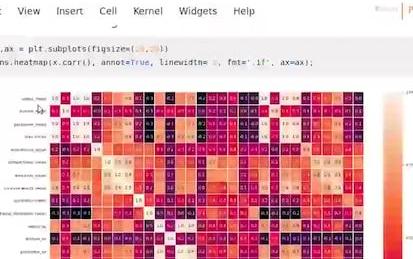
Exploratory Data Analysis with Seaborn
Producing visualizations is an important first step in exploring and analyzing real-world data sets. As such, visualization is an indispensable method in any data scientist's toolbox. It is also a powerful tool to identify problems in analyses and for illustrating results.In this project-based course, we will employ the statistical data visualization library, Seaborn, to discover and explore the relationships in the Breast Cancer Wisconsin (Diagnostic) Data Set.
-
Course by

-
 Self Paced
Self Paced
-
 3 ساعات
3 ساعات
-
 الإنجليزية
الإنجليزية

AI Workflow: Business Priorities and Data Ingestion
This is the first course of a six part specialization. You are STRONGLY encouraged to complete these courses in order as they are not individual independent courses, but part of a workflow where each course builds on the previous ones. This first course in the IBM AI Enterprise Workflow Certification specialization introduces you to the scope of the specialization and prerequisites. Specifically, the courses in this specialization are meant for practicing data scientists who are knowledgeable about probability, statistics, linear algebra, and Python tooling for data science and ma
-
Course by

-
 Self Paced
Self Paced
-
 8 ساعات
8 ساعات
-
 الإنجليزية
الإنجليزية

Web Applications and Command-Line Tools for Data Engineering
In this fourth course of the Python, Bash and SQL Essentials for Data Engineering Specialization, you will build upon the data engineering concepts introduced in the first three courses to apply Python, Bash and SQL techniques in tackling real-world problems. First, we will dive deeper into leveraging Jupyter notebooks to create and deploy models for machine learning tasks. Then, we will explore how to use Python microservices to break up your data warehouse into small, portable solutions that can scale.
-
Course by

-
 Self Paced
Self Paced
-
 15 ساعات
15 ساعات
-
 الإنجليزية
الإنجليزية

Form Parsing Using Document AI
This is a self-paced lab that takes place in the Google Cloud console. In this lab you will gain hands-on experience using Document AI by parsing forms from within a Jupyter Notebook so that you can automatically extract information from digitally scanned paper forms.
-
Course by

-
 Self Paced
Self Paced
-
 1 ساعات
1 ساعات
-
 الإنجليزية
الإنجليزية

3D SARS-CoV-19 Protein Visualization With Biopython
In this project you will create an interactive three-dimensional (3D) representation of SARS-CoV-19 (Coronavirus) protein structures & publication-quality pictures of the same, understand properties of SARS-CoV-19 genome, handle biological sequence data stored in FASTA & PDB (Protein Data Bank) and XML format, and get insights from this data using Biopython. This hands-on project will also give you a glimpse of tasks a Bioinformatician performs on a daily basis, along with the up-to-date concepts and database use cases in the field of Medical Research and Human genetics.
-
Course by

-
 Self Paced
Self Paced
-
 3 ساعات
3 ساعات
-
 الإنجليزية
الإنجليزية
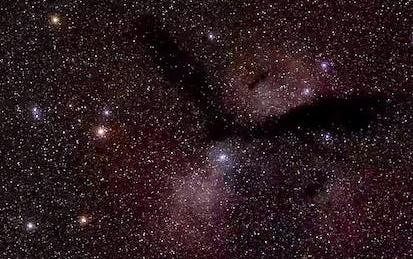
Classify Radio Signals from Space using Keras
In this 1-hour long project-based course, you will learn the basics of using Keras with TensorFlow as its backend and use it to solve an image classification problem. The data we are going to use consists of 2D spectrograms of deep space radio signals collected by the Allen Telescope Array at the SETI Institute. We will treat the spectrograms as images to train an image classification model to classify the signals into one of four classes. By the end of the project, you will have built and trained a convolutional neural network from scratch using Keras to classify signals from space.
-
Course by

-
 Self Paced
Self Paced
-
 3 ساعات
3 ساعات
-
 الإنجليزية
الإنجليزية
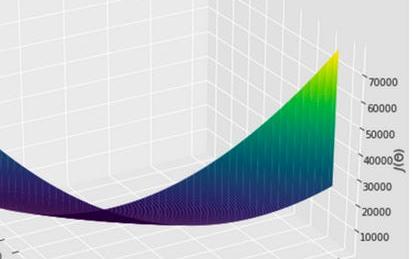
Linear Regression with NumPy and Python
Welcome to this project-based course on Linear Regression with NumPy and Python. In this project, you will do all the machine learning without using any of the popular machine learning libraries such as scikit-learn and statsmodels. The aim of this project and is to implement all the machinery, including gradient descent and linear regression, of the various learning algorithms yourself, so you have a deeper understanding of the fundamentals.
-
Course by

-
 Self Paced
Self Paced
-
 3 ساعات
3 ساعات
-
 الإنجليزية
الإنجليزية

Fundamentals of Machine Learning in Finance
The course aims at helping students to be able to solve practical ML-amenable problems that they may encounter in real life that include: (1) understanding where the problem one faces lands on a general landscape of available ML methods, (2) understanding which particular ML approach(es) would be most appropriate for resolving the problem, and (3) ability to successfully implement a solution, and assess its performance.
-
Course by

-
 Self Paced
Self Paced
-
 18 ساعات
18 ساعات
-
 الإنجليزية
الإنجليزية

Scrape and analyze data analyst job requirements with Python
In this project, you’ll help a recruitment agency improve its job vacancy sourcing by using Python’s web-scraping capabilities to extract job postings from multiple sites. This task will require you to write a Python script to extract job posting data from the source site and save it to a comma separated values (CSV) file.
-
Course by

-
 Self Paced
Self Paced
-
 2 ساعات
2 ساعات
-
 الإنجليزية
الإنجليزية
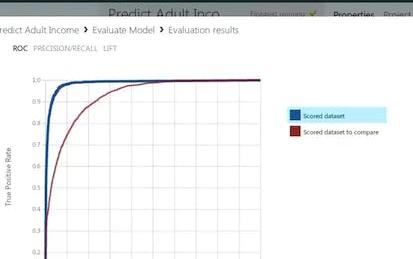
Machine Learning Pipelines with Azure ML Studio
In this project-based course, you are going to build an end-to-end machine learning pipeline in Azure ML Studio, all without writing a single line of code! This course uses the Adult Income Census data set to train a model to predict an individual's income. It predicts whether an individual's annual income is greater than or less than $50,000. The estimator used in this project is a Two-Class Boosted Decision Tree classifier. Some of the features used to train the model are age, education, occupation, etc.
-
Course by

-
 Self Paced
Self Paced
-
 3 ساعات
3 ساعات
-
 الإنجليزية
الإنجليزية
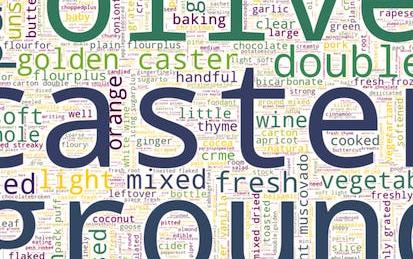
Creating a Wordcloud using NLP and TF-IDF in Python
By the end of this project, you will learn how to create a professional looking wordcloud from a text dataset in Python. You will use an open source dataset containing Christmas recipes and will create a wordcloud of the most important ingredients used in these recipes. I will teach you how load a JSON dataset, clean the dataset by removing encodings and unwanted characters, and lemmatize your dataset. I will also teach you how to calculate TF-IDF weights of words in your dataset and use these weights to create a wordcloud.
-
Course by

-
 Self Paced
Self Paced
-
 3 ساعات
3 ساعات
-
 الإنجليزية
الإنجليزية
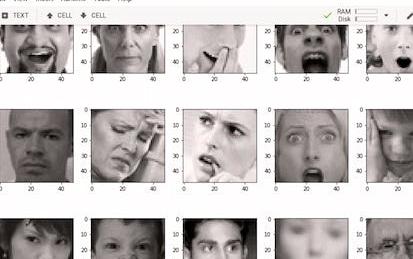
Facial Expression Recognition with Keras
In this 2-hour long project-based course, you will build and train a convolutional neural network (CNN) in Keras from scratch to recognize facial expressions. The data consists of 48x48 pixel grayscale images of faces. The objective is to classify each face based on the emotion shown in the facial expression into one of seven categories (0=Angry, 1=Disgust, 2=Fear, 3=Happy, 4=Sad, 5=Surprise, 6=Neutral). You will use OpenCV to automatically detect faces in images and draw bounding boxes around them.
-
Course by

-
 Self Paced
Self Paced
-
 2 ساعات
2 ساعات
-
 الإنجليزية
الإنجليزية

Perform exploratory data analysis on retail data with Python
In this project, you'll serve as a data analyst at an online retail company helping interpret real-world data to help make key business decisions. Your task is to explore and analyze this dataset to gain insights into the store's sales trends, customer behavior, and popular products.
-
Course by

-
 Self Paced
Self Paced
-
 3 ساعات
3 ساعات
-
 الإنجليزية
الإنجليزية

Using SAS Viya REST APIs with Python and R
SAS Viya is an in-memory distributed environment used to analyze big data quickly and efficiently. In this course, you’ll learn how to use the SAS Viya APIs to take control of SAS Cloud Analytic Services from a Jupyter Notebook using R or Python. You’ll learn to upload data into the cloud, analyze data, and create predictive models with SAS Viya using familiar open source functionality via the SWAT package -- the SAS Scripting Wrapper for Analytics Transfer. You’ll learn how to create both machine learning and deep learning models to tackle a variety of data sets and complex problems.
-
Course by

-
 Self Paced
Self Paced
-
 18 ساعات
18 ساعات
-
 الإنجليزية
الإنجليزية

Simple Recurrent Neural Network with Keras
In this hands-on project, you will use Keras with TensorFlow as its backend to create a recurrent neural network model and train it to learn to perform addition of simple equations given in string format. You will learn to create synthetic data for this problem as well. By the end of this 2-hour long project, you will have created, trained, and evaluated a sequence to sequence RNN model in Keras. Computers are already pretty good at math, so this may seem like a trivial problem, but it’s not! We will give the model string data rather than numeric data to work with.
-
Course by

-
 Self Paced
Self Paced
-
 3 ساعات
3 ساعات
-
 الإنجليزية
الإنجليزية
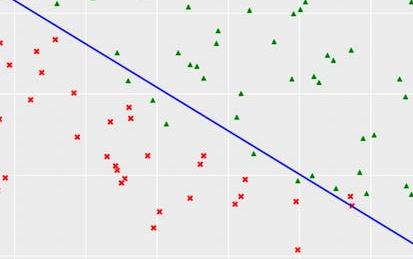
Logistic Regression with NumPy and Python
Welcome to this project-based course on Logistic with NumPy and Python. In this project, you will do all the machine learning without using any of the popular machine learning libraries such as scikit-learn and statsmodels. The aim of this project and is to implement all the machinery, including gradient descent, cost function, and logistic regression, of the various learning algorithms yourself, so you have a deeper understanding of the fundamentals.
-
Course by

-
 Self Paced
Self Paced
-
 2 ساعات
2 ساعات
-
 الإنجليزية
الإنجليزية

Bayesian Inference with MCMC
The objective of this course is to introduce Markov Chain Monte Carlo Methods for Bayesian modeling and inference, The attendees will start off by learning the the basics of Monte Carlo methods. This will be augmented by hands-on examples in Python that will be used to illustrate how these algorithms work. This will be the second course in a specialization of three courses .Python and Jupyter notebooks will be used throughout this course to illustrate and perform Bayesian modeling with PyMC3.
-
Course by

-
 Self Paced
Self Paced
-
 15 ساعات
15 ساعات
-
 الإنجليزية
الإنجليزية
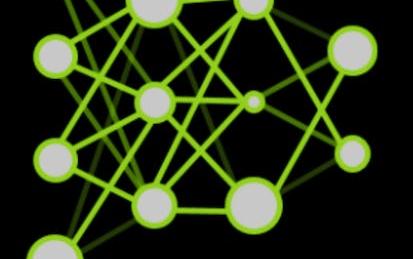
Image Super Resolution Using Autoencoders in Keras
Welcome to this 1.5 hours long hands-on project on Image Super Resolution using Autoencoders in Keras. In this project, you’re going to learn what an autoencoder is, use Keras with Tensorflow as its backend to train your own autoencoder, and use this deep learning powered autoencoder to significantly enhance the quality of images. That is, our neural network will create high-resolution images from low-res source images.
-
Course by

-
 Self Paced
Self Paced
-
 2 ساعات
2 ساعات
-
 الإنجليزية
الإنجليزية

Mathematics for Machine Learning: PCA
This intermediate-level course introduces the mathematical foundations to derive Principal Component Analysis (PCA), a fundamental dimensionality reduction technique. We'll cover some basic statistics of data sets, such as mean values and variances, we'll compute distances and angles between vectors using inner products and derive orthogonal projections of data onto lower-dimensional subspaces.
-
Course by

-
 Self Paced
Self Paced
-
 21 ساعات
21 ساعات
-
 الإنجليزية
الإنجليزية

Clean and analyze social media usage data with Python
In this project, you'll serve as a data analyst at a marketing firm specializing in social media brand promotion.
-
Course by

-
 Self Paced
Self Paced
-
 2 ساعات
2 ساعات
-
 الإنجليزية
الإنجليزية

Julia for Beginners in Data Science
This guided project is for those who want to learn how to use Julia for data cleaning as well as exploratory analysis. This project covers the syntax of Julia from a data science perspective. So you will not build anything during the course of this project.
While you are watching me code, you will get a cloud desktop with all the required software pre-installed. This will allow you to code along with me. After all, we learn best with active, hands-on learning.
Special Features:
1) Work with 2 real-world datasets.
-
Course by

-
 Self Paced
Self Paced
-
 3 ساعات
3 ساعات
-
 الإنجليزية
الإنجليزية

Image Compression with K-Means Clustering
In this project, you will apply the k-means clustering unsupervised learning algorithm using scikit-learn and Python to build an image compression application with interactive controls.
-
Course by

-
 Self Paced
Self Paced
-
 3 ساعات
3 ساعات
-
 الإنجليزية
الإنجليزية
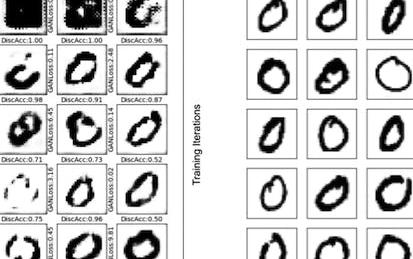
Understanding Deepfakes with Keras
In this 2-hour long project-based course, you will learn to implement DCGAN or Deep Convolutional Generative Adversarial Network, and you will train the network to generate realistic looking synthesized images. The term Deepfake is typically associated with synthetic data generated by Neural Networks which is similar to real-world, observed data - often with synthesized images, videos or audio.
-
Course by

-
 Self Paced
Self Paced
-
 3 ساعات
3 ساعات
-
 الإنجليزية
الإنجليزية

Perform Sentiment Analysis with scikit-learn
In this project-based course, you will learn the fundamentals of sentiment analysis, and build a logistic regression model to classify movie reviews as either positive or negative. We will use the popular IMDB data set. Our goal is to use a simple logistic regression estimator from scikit-learn for document classification.
-
Course by

-
 Self Paced
Self Paced
-
 3 ساعات
3 ساعات
-
 الإنجليزية
الإنجليزية
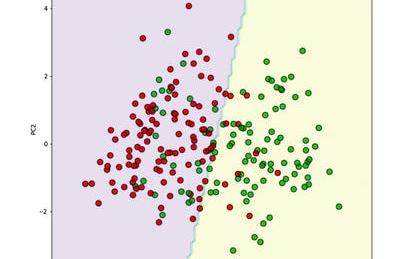
Support Vector Machines with scikit-learn
In this project, you will learn the functioning and intuition behind a powerful class of supervised linear models known as support vector machines (SVMs). By the end of this project, you will be able to apply SVMs using scikit-learn and Python to your own classification tasks, including building a simple facial recognition model.
-
Course by

-
 Self Paced
Self Paced
-
 3 ساعات
3 ساعات
-
 الإنجليزية
الإنجليزية



